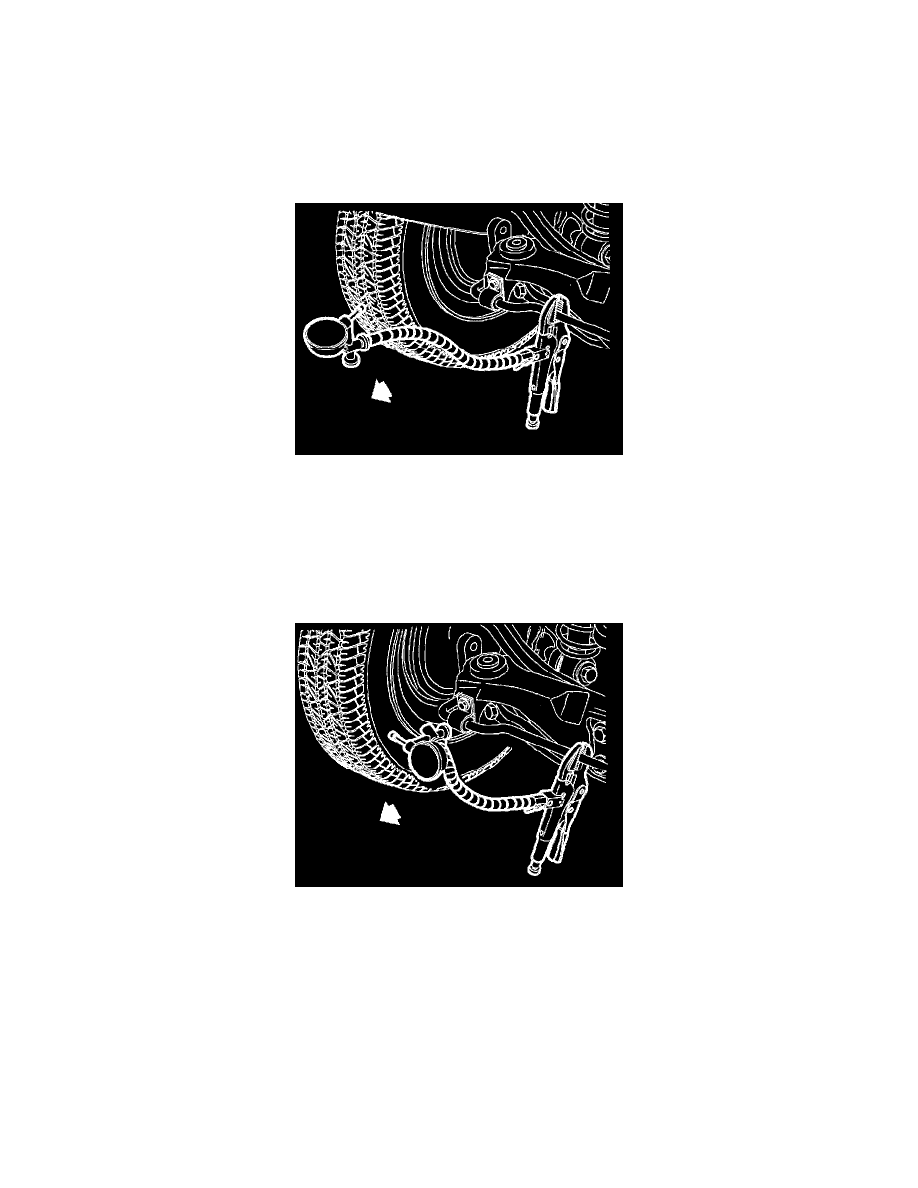L300 V6-3.0L VIN R (2001)

^
Obvious drive axle runout.
^
Proper tire inflation pressure.
^
Bent wheels.
^
Debris build-up on tire or wheel.
^
Loose or missing wheel weights or wheel bolts.
^
Irregular or excessive tire wear.
^
Proper tire bead seating on rim.
^
Damaged tires, such as tread distortions, separations, or bulges from impact damage. Slight sidewall indentations are normal and will not affect
ride quality.
Balance is the easiest procedure to perform and should, therefore, be done first if the vibration occurs at highway speeds. An off-car, two-plane dynamic
balance should first be performed. This will correct any imbalance in the tire and wheel assembly.
An on-car finish balance should then be performed to correct any brake drum, rotor, or wheel cover imbalance. Follow the balancing procedures of the
balancing machine being used.
If balance does not correct the highway speed vibration, or if the vibration is at low speeds, runout is the probable cause. Runout can be caused by the
tire, wheel, or the way the wheel attaches to vehicle. The following procedure should be used.
A. If runout is suspected, the free runout of the tire and wheel assembly should first be measured on vehicle. A dial indicator with a roller wheel is
preferable, but a dial indicator with button end may be used. Lateral runout (side-to-side) should be measured on the tire's sidewall as close to the
tread shoulder as possible. Radial runout (up and down) should be measured on center tread rib. Some tread designs may require tightly wrapping
a piece of tape around center tread circumference for better dial indicator contact. Whether measuring radial or lateral runout disregard any
instantaneous indicator needle jumps due to sidewall depressions, tread blocks, etc. Record the total indicator reading, and location of the high
point of runout. The total tire and wheel on-car runout should be less than 1.52 mm (0.060 inch), if either measurement exceeds 1.52 mm (0.060
inch), proceed to step B.
B. If on-car radial or lateral runout measured in Step A exceeds 1.52 mm (0.060 inch), mount tire and wheel assembly on a dynamic balance machine
and again measure amount of runout. Locate on the machine using the wheel's inside center pilot hole. Using the same procedure as in step A,
record the amount of tire and wheel runout and its high point location. Next, measure wheel. If wheel exceeds specifications, replace wheel. If tire
and wheel radial or lateral runout exceeds 1.27 mm (0.050 inch) at tire tread, proceed to step C.
C. If off-car tire and wheel radial or lateral runout measured in step B exceeds 1.27 mm (0.050 inch), match mount high radial runout point of tire to
low radial runout point of wheel. Inflate, mount on dynamic balance machine, and again measure and record radial and lateral runout and its
location, as done in step B. In many cases, match mounting tire on wheel will bring the assembly's runout into the acceptable range of less than
